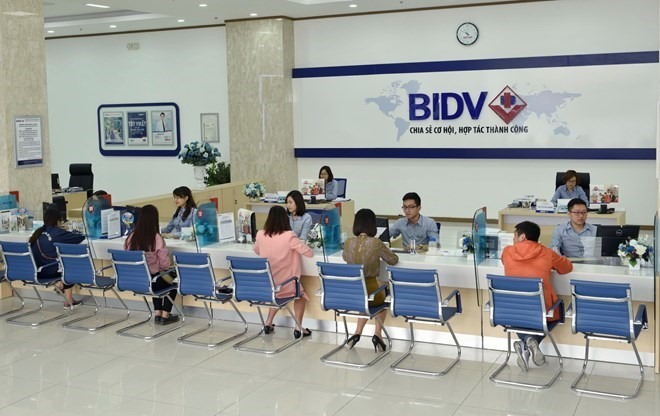 Economy
Economy

A moderation in Vietnamese banks’ credit growth is a positive for their asset quality and capitalisation, Moody’s Investors Service said in a recent report.
 |
| Lower credit growth encourages banks to focus on borrowers of better quality. — VNA/VNS Photo |
HÀ NỘI — A moderation in Vietnamese banks’ credit growth is a positive for their asset quality and capitalisation, Moody’s Investors Service said in a recent report.
The rating agency cited data from the State Bank of Việt Nam (SBV) that showed Vietnamese banks’ total credit grew 14 per cent in 2018, the lowest growth rate since 2014. The slower growth is primarily due to the central bank’s tightening of credit growth limits for banks.
According to Moody’s, tighter credit can lead to rising problem loan ratios, reflecting the seasoning of banks’ loan portfolios. However, lower credit growth encourages banks to focus on borrowers of better quality, which will improve asset quality in the long term.
The moderation in credit growth will also lower pressure on capital, especially for State-owned banks, Moody’s said. Vietnamese banks have generally over-emphasised loan growth. Without tighter controls from the SBV, most banks would likely have grown loans by more than 20 per cent in 2018.
“We attribute the slower credit growth to SBV’s tightening of credit growth limits given to banks since the third quarter of 2018, as well as the muted loan growth at capital-strapped, large State-owned banks,” the Moody’s report said.
Moody’s expects banks’ credit growth in 2019 to remain at around 14 per cent as the central bank maintains its control and as the progress of raising new capital by State-owned banks remains slow.
The SBV typically assigns a credit growth limit to every bank in Việt Nam at the beginning of each year. Then, throughout the year, the SBV monitors the system-wide level of credit growth. In some cases, based on economic growth and inflation targets, it grants additional credit growth limits.
The central bank is linking credit growth limits to Basel II implementation, granting higher credit growth limits only to banks that transition onto Basel II ahead of the 2020 timeline. So far, only Vietcombank and VIB have been officially recognised by the SBV as having implemented the standards.
Rapid credit growth in recent years and the high overall leverage in the economy – 131 per cent of GDP in 2017 – represent a risk to banks because borrowers’ debt servicing capability could be negatively impacted if there is a slump in economic activities or if interest rates increase, Moody’s warned. — VNS